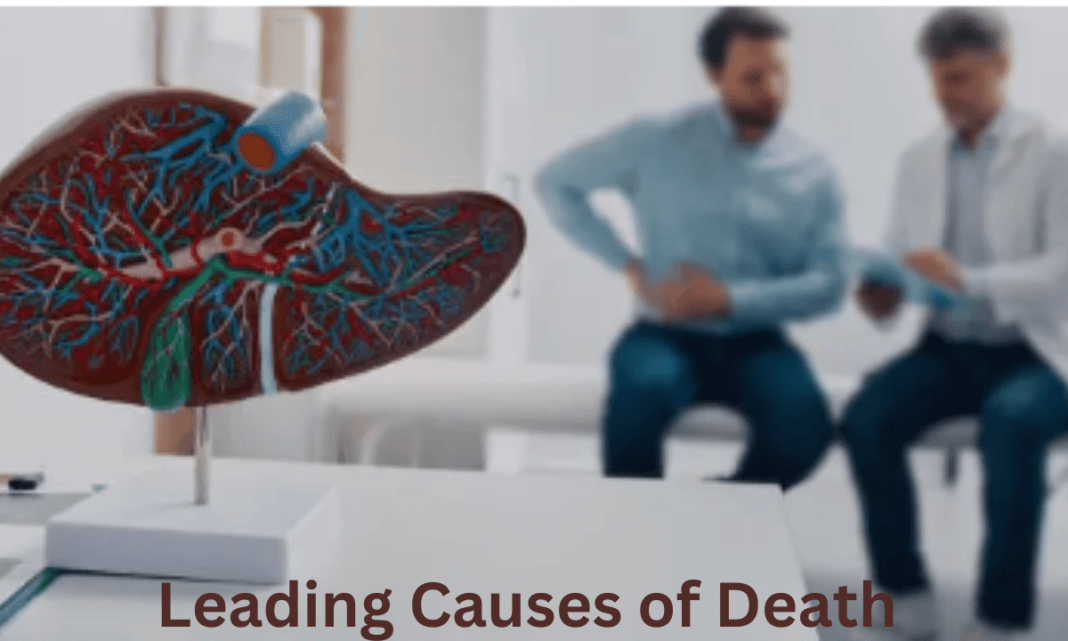In the US, What Are The Top Ten Leading Causes of Death Or Leading Diseases?
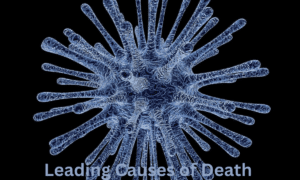
The term “leading causes of death” refers to groupings of underlying causes of death or main ICD (International Cause of Death) classifications (such as heart diseases, cancer, accidents, etc.) that often account for a significant number of deaths within a certain population and time frame.
Leading Causes of Death
The top 10 causes of death during a certain year are reported most often. All disorders that caused or contributed to death, as well as the conditions of any accidents or acts of violence that resulted in injuries, are considered causes of mortality. The number of fatalities from a particular cause per 100,000 people in a particular year is the standard way to represent the crude mortality rate.
The CDC reports that heart disease is still the top cause of mortality in the US, despite though new cases of cancer in the US are expected to surpass two million for the first time in 2024.
How Many People Die Every Year in the US? What Are the Top 10 Leading Causes of Death?
Among the leading causes of death, two stand out: heart disease and cancer. You can lessen your vulnerability to these and other major killers by opting for healthier lifestyle choices, though this is by no means guaranteed.
The top two killers in the United States for more than ten years running have been cardiovascular disease and cancer. These two factors account for 37.5% of all fatalities in the US.
When added to COVID-19, the third leading cause of mortality in the US, the three diseases together account for 50% of all fatalities.
For over 30 years, the CDC has diligently collected and analysed data on the causes of death. Researchers and doctors can use this data to determine if healthcare epidemics are becoming urgent enough to warrant intervention.
The data also shed light on the potential benefits of preventative measures in extending and improving people’s health.
More than 75% of all fatalities in the US occur from the top 10 causes. Find out what causes each of the primary problems and how to avoid them.
Brain Eating Amoeba Naegleria fowleri
The CDC’s 2021 Report Contains the Following Data:
1. Cardiovascular Disease
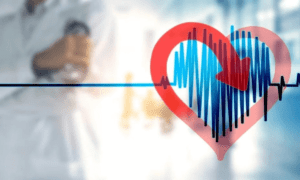

- The annual death toll is 695,547.
- Twenty percent of all fatalities
- Prevalently found in males
- Cigarette smokers,
- Those who are overweight or obese,
- And those who have a personal or family history of cardiovascular disease
- Adults 55 and above
Reasons for
- High blood pressure,
- high levels of low-density lipoprotein (LDL) cholesterol,
- Diabetes,
- smoking (including secondhand smoke exposure),
- obesity,
- poor nutrition,
- lack of physical activity,
- and hypertension are the leading causes of cardiovascular disease and stroke.
Cardiovascular disease causes
How can cardiovascular disease develop?
Different types of cardiovascular disease might have different causes. Atherosclerosis, a condition characterized by the development of plaque in the arteries, is one cause of both coronary artery disease and peripheral arterial disease. Arrhythmias can be caused by drugs, scarring of the heart muscle, hereditary issues, or coronary artery disease. Causes of valve disorders include ageing, infections, and rheumatic disease.
In what ways might cardiovascular disease be increased?
Factors that increase your chance of developing cardiovascular disease include:
- Blood pressure that is too high (hypertension).
- Hyperlipidemia, or high cholesterol.
- Cigarette usage (including electronic cigarettes).
- Diabetes mellitus type 2.
- Past cardiac conditions in the family.
- A sedentary lifestyle.
- Having a weight problem.
- Consume a substantial amount of sugar, fat, and salt.
- Engaging in excessive alcohol consumption.
- Misusing drugs for recreational or non-prescribed medicinal purposes.
- Preeclampsia or toxemia.
- Gestational diabetes.
- Conditions characterized by persistent inflammation or autoimmunity.
- Permanent damage to the kidneys.
What is the treatment like for heart disease?
The symptoms you experience and the specific type of cardiovascular disease you have will determine your treatment plan. One possible approach to treating cardiovascular disease is:
- Alterations to one’s way of life: For instance, one could start eating healthier, do more aerobic exercise, and stop using tobacco products altogether (including vaping).
- Medication: To help control cardiovascular disease, your healthcare practitioner may prescribe medication. Your specific form of cardiovascular illness will determine the medication that is prescribed to you.
- surgeries. If your healthcare professional determines that medicine alone is insufficient to manage your cardiovascular disease, they may recommend additional procedures or surgeries. Cardioversion, minimally invasive cardiac surgery, open-heart surgery, stents in the heart or legs, and ablations are among examples.
- In cardiac rehabilitation, a supervised exercise regimen may be necessary to restore cardiac strength.
- Careful monitoring over time may be necessary in the absence of medicine or surgery, a condition known as active surveillance.
The Relationship Between Sleep Problems and Depression, Some Major Points
Prevention
Averting cardiovascular disease: what steps may I take?
Congenital heart disease is one kind of cardiovascular illness that cannot be prevented. A lower risk of several cardiovascular diseases is achievable with lifestyle adjustments.
Lessen your chances of cardiovascular disease by doing:
- Avoiding all tobacco products.
- Taking care of a variety of medical issues, including type 2 diabetes, hypertension, and excessive cholesterol.
- Reaching and keeping a healthy weight!
- Keeping salt and saturated fat intake lower.
- Doing some form of physical activity for 30–60 minutes most days.
- Reducing and managing stress.
2, Cance
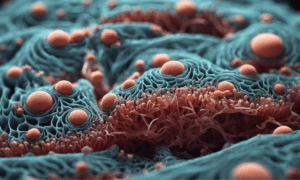

There are 605,213 fatalities annually, which accounts for 17% of all deaths.
More prevalent among While there is a unique set of risk factors for each kind of cancer, there are several factors that are shared by many different kinds. Among these potential dangers are:
- folks above a particular age who partake in alcoholic and cigarette products
- radiation workers, sunbathers, and those afflicted with chronic inflammation
- Those who are overweight or who have a personal or family history of the condition
What Triggers Cancer?
Cancer does not have a singular cause. Researchers think that cancer is the result of a complex interplay of many different variables. A person’s constitution, their surroundings, or their genes could all play a role.
When compared to cancers in adults, those in children present unique challenges in diagnosis, treatment, and prognosis. Two key distinctions are cancer aetiology and survival rates. Overall, the five-year survival rate for cancers in children is approximately 80%, whereas it is 68% for tumours in adults.
Theoretically, this disparity arises because children’s cancer is more amenable to treatment and because children can handle more strenuous treatment.
Stem cells are common sites of cancer in children and young adults. Stem cells are basic cells with the potential to differentiate into many different kinds of specialized cells. Typically, cancer in children develops as a result of an atypical (happens by accident) change or mutation in cells
. Typically, epithelial cells are the ones that develop into cancer in adulthood. Both the inside and outside of the body are lined by epithelial cells. Exposure to these cells in the environment causes cancer to develop. Because of this, malignancies in adults are sometimes called acquired cancers.
Drink Less App: People Can Use This App to Cut Back on Their Alcohol Consumption.
Risk Factors for Cancer
Repetitive exposures or risk factors have been linked to certain malignancies, especially in adults. Anything that can raise an individual’s susceptibility to a certain disease is called a risk factor. A risk factor may lower the body’s resistance to an illness, but it does not cause the sickness itself. Several theories have been advanced on the causes and risk factors of cancer, including:
-
- Lifestyle considerations. Certain lifestyle choices, such as smoking, eating a high-fat diet, and working with harmful chemicals, can increase the risk of certain cancers in adults. However, these lifestyle factors are usually not present in children with cancer because they are too young.
- Some malignancies in children may have strong genetic, hereditary, or family history components. Multiple cases of cancer, in different types, may occur in the same family. In many cases, it is not known if the illness is due to a mutation in the family’s genes, exposure to chemicals in the neighborhood, a mix of these variables, or just pure chance.
- A few hereditary diseases. It is known, for instance, that the immune systems of people with Wiskott-Aldrich and Beckwith-Wiedemann syndromes are affected. An intricate network of cells and organs called the immune system wards against harmful pathogens. Cells that develop into immune system components are generated in the bone marrow. According to one idea, cancer develops when the bone marrow’s stem cells get injured or faulty, and, instead of making normal cells, they form cancer cells. The stem cell problem can have its roots in a hereditary condition or a response to a toxic substance or virus.
- Exposures to some viruses. Certain pediatric malignancies, including Hodgkin and non-Hodgkin lymphomas, have been associated with an increased chance of developing when the Epstein-Barr virus and the AIDS virus are present. The virus may change a cell’s characteristics. Eventually, the cell’s mutations transform it into a cancer cell, which in turn causes it to replicate more cancer cells.
- Environmental exposures. Research has shown a direct link between pesticides, fertilizers, and power lines and childhood malignancies. Some communities and localities have shown indications of cancer in youngsters who are not related to each other. We don’t know if these substances cause cancer or if it’s just a coincidence if they are exposed to pregnant women or infants.
- Some types of radiation and chemotherapy use very high doses. Exposure to these chemicals in childhood increases the risk of secondary cancers in some people. The immune system and cells are both susceptible to these powerful anticancer drugs. A second malignancy develops after the first cancer has been treated.
- Cancer Genomes. A major step forward in the fight against cancer has been the identification of specific genes that have a role in the disease. A genetic change accounts for more than 90% of cancer cases. Some changes run in families and others happen randomly or as a result of exposure to certain substances over a long period.
Risks to Children’s “Sensory Processing” From Excessive Screen Time
Advice on how to avoid
Cancer prevention is not an obvious option. However, smoking is one of the habits that has been associated with an elevated risk of cancer. One way to reduce your risk is to refrain from doing those things. Some examples of positive behavioral changes are:
- Keep the weight down. Make sure you eat healthily and get plenty of exercise.
- Put down the cigarette and cut back on the alcohol.
- Stay away from the sun for long periods. Stay away from tanning beds.
- Check your skin, have a mammogram, check your prostate, and other cancer screenings regularly.
3. COVID-19


- The annual death toll is 416,893.
- The ratio of fatalities to total: 12%
- Less prevalent in the case of contact with an infected person puts you at high risk of developing SARS-CoV-2, the virus responsible for COVID-19, if you have not had the vaccine. Even after getting a vaccine, you run the risk of contracting the virus, but with milder symptoms.
Which factors lead to the spread of COVID-19?
Coronavirus type 2, often known as SARS-CoV-2, is the causative agent of COVID-19.
Coronavirus primarily travels from person to person, even infected people who do not show any symptoms. People who are infected with the COVID-19 virus can spread the infection through their breath whenever they cough, sneeze, breathe, sing, or speak.
For instance, when someone sneezes or coughs, the coronavirus they’re carrying about with them can land on the face of someone close.
People in close quarters or places with poor air circulation run the risk of inhaling the infected person’s droplets or particles. It is also possible for a person to contract the coronavirus by direct contact with respiratory droplets on a contaminated surface, which might then be transferred to their face.
Multiple infections with COVID-19 are conceivable.
- The immune system’s ability to ward against the COVID-19 virus may weaken over time.
- The virus can compromise an individual’s immune system if their exposure to it is high enough.
A virus replicates itself as it infects a population. During this procedure, there is a chance that each copy’s genetic code will change at random. Mutations describe these alterations. The COVID-19 coronavirus has the potential to re-infect humans if it evolves in a way that renders immunity to earlier infections or vaccinations ineffective.
Some pets are susceptible to contracting the COVID-19 virus. This coronavirus has been shown to cause symptoms in cats, dogs, hamsters, and ferrets. Getting COVID-19 from a pet is quite unusual.
Advice on how to avoid
- Vaccination against COVID-19 should be maintained at a current schedule. Stay away from anyone exhibiting signs of COVID-19 or any respiratory illness, or at least minimize your interaction with them.
- To assist prevent the transmission of bacteria and viruses, the next best thing is to practice excellent hygiene and maintain physical distance. It is crucial to regularly wash your hands after being outdoors.
- The government has relaxed its regulations on masks, but wearing one is still a good idea—particularly for the elderly or anyone else on the high-risk list.
4. Accidents (Unintentional Injuries)
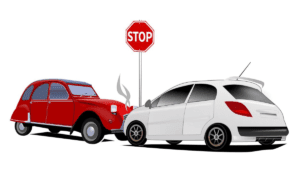

- The annual death toll is 224,935.
- Contribution to overall mortality: 6.5%
- Less prevalent in the case of those in hazardous occupations, males, and those between the ages of 1 and 44
Why do accidents happen?
Driving While Distracted
- One in five deadly accidents in the United States is caused by drivers who are distracted, according to the Centers for Disease Control and Prevention (CDC). Here are a few examples of distracted driving that happen frequently:
- Engaging in texting while operating a vehicle
- With the use of a GPS or mobile app
- Eating in a car
- Interacting with passengers or making phone calls
- Changing environmental controls
- While lost in thought
If you want to keep your eyes, focus, and mind on the road while driving, the best thing to do is to step off the road before you try to do anything.
Driving at a high speed
- Racing accounts for one-third of all vehicle collisions. Almost 90% of drivers have admitted to going faster than the speed limit on some occasions. Be that as it may, speed-related vehicle accidents are among the leading causes of catastrophic injury and, tragically, death.
- It is possible to have a personal injury case for maximum compensation if you have been hurt as a result of another driver’s reckless driving. Get in touch with a vehicle accident attorney at Steinberg Injury Lawyers right away to go over your legal options.
Leprosy Cases In The US: The Old Sickness is Spreading, But What is it And Why is it Happening Now?
Operational Impaired Driving
- Drunk or drugged driving accounts for around 33% of all accidents, second only to speeding. The capacity to react to dangers, determine one’s speed, and make rational decisions while driving are all negatively affected by intoxication.
- You might have a good personal injury case if you were hurt because an intoxicated driver was careless. For a trusted consultation with an automobile accident attorney, contact us immediately.
Dangerous Motoring
- When a driver demonstrates an utter lack of concern for the well-being of other road users, they are engaging in reckless driving. Some examples of what it can cover are:
- Going over the speed limit by more than 20 miles per hour
- Racing on city streets
- Using two-lane streets carelessly when passing other cars
- Sidestepping the authorities
- Refusing to move out of the way
Advice on how to avoid
- A lack of caution or negligence might lead to accidental injuries. Keep your senses sharp. Make sure you’re safe by taking all the necessary measures.
- Seek immediate medical attention if you injure yourself; failure to do so could result in fatal consequences.
5. Stroke
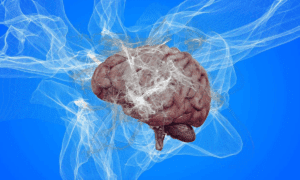

- Yearly fatalities: 162,890
- Out of all the fatalities, 4.7%
- Less prevalent in the case of:
- males and females who use contraception
- those suffering from diabetes hypertension
- patients suffering from cardiac problems
- persons who engage in the habit of smoking
Who or what triggers a stroke?
Conditions that increase the risk of stroke can be treated. Other factors that endanger you are immutable:
- I have hypertension. Hypotension is another name your doctor might use. Strokes are most commonly caused by it. Your doctor will discuss treatment options if your blood pressure consistently exceeds 130/80.
- Tobacco is... The risk of stroke increases if you smoke or chew it. The use of nicotine raises blood pressure. A fatty accumulation in the major neck artery is caused by cigarette smoke. Your blood’s clotting potential is increased since it thickens it as well. Some people are still impacted by secondhand smoke.
- Heart illness. A quarter of all strokes among the extremely elderly are caused by atrial fibrillation, an erratic pulse, and faulty heart valves. The buildup of fatty deposits can potentially lead to arterial blockage.
- Diabetes mellitus type 1. Those who suffer from it frequently experience hypertension and tend to be overweight. The risk of stroke is increased by both. Stroke is more frequent in those with diabetes because the disease destroys blood arteries. Strokes caused by elevated blood sugar levels are associated with a more severe degree of brain damage.
- Diet and physical activity. Excessive body weight can elevate the likelihood of experiencing a stroke. If you exercise daily, you can reduce your chances. Get your blood pumping by going for a vigorous 30-minute walk, lifting weights, and doing push-ups.
- Treatment with medication. An increased risk of stroke is associated with some medications. For example, doctors may recommend blood-thinning medications to reduce the risk of blood clots, but these medications might increase the risk of bleeding, which can lead to a stroke. A greater risk of stroke has been associated with hormone therapy, which is used to alleviate hot flashes and other menopause symptoms, according to studies. Additionally, the low estrogen levels found in oral contraceptives can increase your risk.
- Years lived. Even unborn children are not immune to stroke. As you become older, your chances tend to increase. Between the ages of 55 and 60, they increase by 100% every decade.
- Loving ones. Inherited strokes are possible. There may be a genetic predisposition to diabetes or hypertension in your family. A hereditary condition that prevents blood from reaching the brain can cause strokes in some people.
- Sexual orientation. Strokes occur at a significantly lower rate in women than in men of the same age. Strokes are more common in men, but women have them later in life, making a full recovery less probable and increasing the likelihood of death.
- Go for it. Strokes disproportionately impact people of colour, particularly African Americans and nonwhite Hispanic Americans, in the United States. Additionally, those with Mediterranean, Middle Eastern, or Asian ancestry are at a higher risk of developing sickle cell disease, a hereditary disorder that can cause arterial narrowing and interruption of blood flow.
Techniques For Building Long-Term Memories: Tips and Tricks
Advice on how to avoid
Modifying your lifestyle to lower your risk of cardiovascular disease also lowers your risk of stroke:
- Keep the weight down. Make better dietary and exercise choices.
- Keep an eye on your blood pressure.
- Quit smoking. Refrain from drinking to excess.
- Keep an eye on your diabetes and blood sugar levels.
- Take care of any preexisting conditions affecting the heart.
6. Chronic Respiratory Illnesses
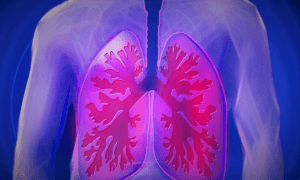

- Annual death toll: 142,342
- Out of all the fatalities, 4.1%
- Less prevalent in the case of: women
- the elderly, those who have smoked in the past or who have been around secondhand smoke, those who have asthma in the past, and those living in low-income homes
Respiratory diseases: what are their causes?
- Tobacco consumption is the primary factor contributing to the prevalence of chronic obstructive pulmonary disease (COPD) in developed countries. Poor ventilation in developing-world dwellings makes people more susceptible to chronic obstructive pulmonary disease (COPD) from fuel combustion emissions.
- While many smokers experience diminished lung function, only a small percentage of long-term smokers develop clinically noticeable chronic obstructive pulmonary disease (COPD). Some people who smoke end up with less prevalent lung problems. They need a more comprehensive assessment to rule out the possibility of a COPD diagnosis.
The impact on your lungs
The trachea is the windpipe that carries air into the lungs via the bronchi, two big tubes. Like a tree’s branches, these tubes branch out into numerous smaller tubes (bronchioles) within the lungs, which ultimately lead to groups of small air sacs (alveoli).
The air sacs are filled with small capillaries, which are blood vessels and have extremely thin walls. Inhaled oxygen goes into your bloodstream via these blood arteries. Simultaneously, one exhales carbon dioxide, a gas that is a byproduct of metabolism.
The bronchial tubes and air sacs are naturally elastic, which allows your lungs to expel air from your body. As a result of chronic obstructive pulmonary disease (COPD), they become less elastic and overextend, which causes part of your exhaled air to remain in your lungs.
Potential dangers
Common determinants of chronic obstructive pulmonary disease (COPD) could be:
- Coming into contact with cigarette smoke. Prolonged cigarette use is the leading cause of chronic obstructive pulmonary disease (COPD). Both the number of packs smoked each day and the number of years smoked increase the risk. Those who smoke pipes, cigars, or marijuana or who are always around heavy smokers may also be in danger.
- Asthmatic individuals. Chronic obstructive pulmonary disease (COPD) risk factors may include asthma, a progressive inflammatory airway disease. Smoking and asthma together greatly enhance the likelihood of developing chronic obstructive pulmonary disease (COPD).
- Occupational exposure to dust and chemicals. Workplace dust, vapours, and fumes can irritate and inflame the lungs over time.
- Exposure to fumes from burning fuel. People in poorer countries are more likely to develop chronic obstructive pulmonary disease (COPD) due to prolonged exposure to smoke and soot from cooking and heating in houses with inadequate ventilation.
- Family tree. One rare genetic abnormality that can induce chronic obstructive pulmonary disease (COPD) is alpha-1-antitrypsin deficiency. Some smokers may be more predisposed to the disease due to other genetic reasons.
Prevention
- Conditions like chronic obstructive pulmonary disease (COPD) are unusual in that they usually have a known cause, a known method of prevention, and strategies to delay the disease’s course. To avoid chronic obstructive pulmonary disease (COPD), which is mostly caused by smoking cigarettes, one should either never light up or quit immediately.
- These assertions may not appear so straightforward to a long-term smoker, particularly if they have tried to quit before—once, twice, or more than once. Continue making an effort to stop. It is of the utmost importance to locate a program that can assist you in permanently quitting smoking. This is your greatest bet for protecting your lungs from harm.
Other factors that increase the likelihood of chronic obstructive pulmonary disease include
- working in environments with chemical fumes and dust.
- Discuss the best methods of protection,
- including the use of respiratory protective gear,
- with your supervisor if you are required to operate with these kinds of lung irritants.
Some things you can do to lessen the likelihood of COPD-related problems are as follows:
A lower risk of cardiovascular disease and lung cancer can be achieved by giving up smoking.
You can lower your risk of contracting some infections by getting vaccinated against pneumococcal pneumonia regularly and the flu shot once a year.
Have a conversation with your doctor if you’re feeling down or hopeless, or if you suspect you could be depressed.
7. Dementia
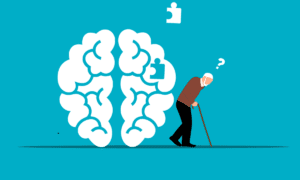

- Annual fatalities: 119,399; 3.4% of all fatalities
- This is more prevalent in females
- aged 65 and over (the chance of developing Alzheimer’s disease doubles every five years after this age).
- anyone who has a direct lineage to the illness
How does Alzheimer’s disease develop?
- For Alzheimer’s disease to manifest, there must be an aberrant accumulation of proteins in the brain. Amyloid and tau proteins, when they accumulate, lead to the death of brain cells.
- There are more than 100 billion cells in the human brain, including nerve cells. Coordination of all the messages required to carry out cognitive processes like learning, remembering, and planning is a hallmark of the nervous system.
- Amyloid protein, according to scientists, accumulates in brain cells and eventually forms plaques. Protein tau, which is also formed by twisted fibres, can also entangle itself. Because these plaques and tangles obstruct the transmission of signals between nerve cells, their ability to carry out their functions is impaired.
- The symptoms of Alzheimer’s disease are caused by the gradual and continuous death of nerve cells. It is common for nerve cell death to begin in the hippocampus, a portion of the brain responsible for memory, and then spread to other parts of the brain.
- Researchers are still stumped as to what triggers the accumulation of these proteins. So far, the most plausible explanation for early-onset Alzheimer’s is a genetic mutation. They postulate that a complicated cascade of brain alterations, which might span decades, is responsible for late-onset Alzheimer’s. The root cause is probably influenced by a mix of hereditary, environmental, and lifestyle variables.
Prevention
Are there any things I can do to lower my chances of getting Alzheimer’s?
Some Alzheimer’s risk factors, including age and heredity, are out of your control, while other risk variables may be more amenable to management.
Some things that can put you at risk for Alzheimer’s include:
- The most important risk factor is getting older.
- Family tree.
- Brain damage from a hard fall.
- Depressive disorder.
- Cardiovascular disease and cerebrovascular disease.
- I have hypertension.
- Elevated lipid profile.
- Diabetes mellitus type 1.
- Cigarette smoking.
- Being overweight.
- Keeping up a healthy lifestyle can stave off cognitive loss, according to the research. If you want to lower your chances of getting Alzheimer’s disease, try these:
- Keep your brain active by engaging in activities such as reading, playing an instrument, solving crossword puzzles, or playing board games.
- Do some exercise: Brain cell health may be impacted by the increased blood flow and oxygen levels brought about by exercise. If you’re going to be doing anything that could cause a head injury, you might as well wear a helmet.
- Keep up your social life by talking to loved ones regularly and taking part in group activities like yoga, reading clubs, or community service.
- Optimal nutrition: Adhere to a healthy diet that includes antioxidants, such as the DASH or Mediterranean diets.
- If you are worried about your chance of getting Alzheimer’s disease, you should consult your doctor.
8. A Disease Known as Diabetes


- Annual death toll: 103,294
- Three per cent of all fatalities
- Less prevalent in the case of:
- It is more common to diagnose type 1 diabetes in:
- persons whose ancestry includes the disease or who carry a particular gene that heightens the risk
- persons residing in regions distant from the equator, particularly those with children aged 4 to 7
- persons with a history of diabetes in their family, those who are overweight or obese, and individuals aged 45 and above
How does diabetes develop?
One must be familiar with the regular utilization of glucose by the body to comprehend diabetes.
Insulin and Its Functions
A gland located behind and beneath the stomach (the pancreas) secretes the hormone insulin. Entering the bloodstream, insulin is secreted by the pancreas. Sugar can enter cells when insulin is circulating. Glucose levels in the blood are reduced by insulin.
Pancreatic insulin production decreases in tandem with blood sugar levels.
A glucose’s function
The building blocks of muscles and other tissues, called glucose, are sugar molecules that provide energy to these cells. Two main places where glucose can be found are in food and the liver. After entering the bloodstream, sugar can enter cells with the aid of insulin. Glucose is stored and produced by the liver.
The liver converts glycogen into glucose when blood sugar drops too low, as happens when food isn’t consumed for an extended period. Your glucose level remains within the normal range because of this.
For the most part, scientists still don’t know what causes diabetes. Blood sugar levels rise in every instance. This occurs because of insufficient insulin production by the pancreas. Environmental and genetic variables both have a role in the development of type 2 and type 1 diabetes. Who knows what those factors could be?
Potential dangers
- Different types of diabetes have different risk factors. In any kind, heredity might be a factor. Type 1 diabetes risk factors can include environmental factors and geography.
- Autoantibodies, which are cells of the immune system that cause diabetes, are sometimes tested for in the families of patients who have type 1 diabetes. A higher probability of getting type 1 diabetes is associated with the presence of certain autoantibodies. Having these autoantibodies does not necessarily lead to diabetes, though.
- Your chance of getting type 2 diabetes may be higher if you are of a certain race or ethnicity. People of colour, Hispanics, American Indians, and Asian Americans are at a higher risk, albeit the exact reason why is unknown.
- Obese people have a higher risk of prediabetes, type 2 diabetes, and gestational diabetes.
Advice on how to avoid
- Type 1 diabetes cannot be prevented. Nonetheless, by making a few adjustments to your daily routine, such as these:
- Find a healthy weight and keep it off.
- The recommended amount of exercise is 30 minutes, five times a week.
- Consume a diet rich in fresh produce, whole grains, lean proteins, and other nutrients.
9. Cirrhosis and Chronic Liver Illness
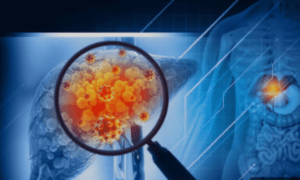

- Total annual fatalities: 56,585
- Ratio to overall mortality: 1.6%
- Less prevalent in the case of:
- people who have an infection of the liver virus known as hepatitis C, a history of heavy alcohol consumption, or fatty liver disease
Why does the liver get sick?
Many things can lead to liver disease.
- The disease Infection of the liver by viruses or parasites can lead to inflammation, which is characterized by swelling and discomfort. The liver’s normal function is hindered by inflammation. Blood or semen, contaminated food or drink, or direct contact with an infected individual are the main vectors for the transmission of viruses that cause liver disease.
- Liver infections caused by hepatitis viruses are prevalent and include:
- Conditions affecting the immune system Hepatitis A, B, and C
- A class of disorders known as autoimmune diseases occurs when the immune system mistakenly targets healthy bodily tissues. Liver autoimmune disorders encompass:
Hepatitis is caused by the immunological system.
- I have primary biliary cholangitis.
- Sclerosing cholangitis, the primary form.
- Molecular Biology
- There is a genetic predisposition for drug accumulation in the liver, which can run in families. Harm to the liver may result from this. Hereditary liver disorders encompass:
- Hemochromatosis is described.
- Wilson’s disease is that.
- Low levels of alpha-1 antitrypsin.
- Metastases such as cancer
- Some examples are:
- Cancer of the liver.
- Cancer of the bile ducts [1].
- A tumour in the liver.
Additional prevalent factors that might lead to liver disease are:
- Extended consumption of alcoholic beverages.
- Nonalcoholic fatty liver disease, also known as metabolic-associated steatotic liver disease, is characterized by the accumulation of fat in the liver.
- Specific medications, whether prescribed or otherwise.
- Some combinations of herbs.
- Regularly coming into touch with harmful substances.
- Potential dangers
- Some things that can make you more likely to get liver disease are:
- Regular consumption of alcohol, whether moderately or heavily.
- Being overweight.
- Diabetes mellitus type 2.
- Pierced or tattooed bodies.
- Needles are used for injecting drugs that are shared.
- Transfusions of blood before 1992.
- Having come into touch with the bodily fluids and blood of other individuals.
- Have sexual relations without a protective garment.
- Contact with chemicals or poisons.
- Chronic liver disease runs in my family.
Advice on how to avoid
- treatment, detox, support groups, and rehabilitation
- You increase your chances of getting cirrhosis or liver disease by drinking more and for longer periods.
- Also, to avoid harming your liver needlessly, take your medication as prescribed if your doctor diagnoses you with hepatitis.
10. Kidney Disease, Nephrotic Syndrome, and Nephrosis


- Annual death toll: 54,358
- Ratio to overall mortality: 1.6%
- Less prevalent in the case of chronically ill individuals,
- such as those suffering from diabetes,
- hypertension,
- and chronic renal infections persons who engage in the habit of smoking
- persons whose weight is excessively high
- persons whose renal disease runs in their families
Living with Chronic Pain: Strategies for Coping and Finding Relief
How do kidney disorders develop?
- Chronic kidney disease can be caused by a variety of diseases and illnesses, such as:
- Diabetes mellitus types 1 and 2
- Hypertension :
- One kind of kidney inflammation is known as glomerulonephritis (gloe-mer-u-low-nuh-FRY-tis).
- The term for an inflammatory condition that affects the kidney’s tubules and their surrounding structures is interstitial nephritis.
- Kidney disorders that run in families, such as polycystic kidney disease
- Prolonged blockage of the urinary tract due to diseases including an enlarged prostate, kidney stones, or certain malignancies
- The vesicoureteral (ves-ih-koe-yoo-REE-tur-ul) canal reflux disease, in which the pee flows backwards into the kidneys,
- A recurring infection of the kidneys, commonly known as pyelonephritis
Potential dangers
- Some things that can make your chances of developing chronic renal disease higher are:
- Type 2 diabetes
- Hypertension :
- Diseases of the heart and blood vessels
- Heart Disease Obesity
- Native American, Asian, or Black heritage Having a history of renal disease in one’s family
- Disrupted renal structure Advying years
Prevention
To lessen the likelihood of kidney disease:
- Take over-the-counter drugs exactly as prescribed. It is important to follow the package directions when taking nonprescription pain medicines including aspirin, ibuprofen (Advil, Motrin IB, and others), and acetaminophen (Tylenol and others). Damage to the kidneys may occur from using multiple pain medicines over an extended period.
- Keep the weight down. Keep moving on most days of the week if you’ve already reached a healthy weight. Discuss healthy weight loss measures with your doctor if you need weight loss.
- Put out the smoke. Cigarette smoking is known to cause kidney damage or worsen the effects of preexisting renal disease. See your physician for help stopping smoking if you’re a chronic smoker. Help is available in the form of support groups, counselling, and medicine.
- Consult your physician about taking steps to manage any health issues that might put you at a higher risk of developing kidney disease. To find out what tests can be done to detect kidney disease, consult your doctor.
Don’t miss out on the latest health and fitness stories! Subscribe to our email newsletter now and deliver them straight to your inbox. Click here to sign up.


